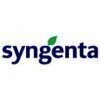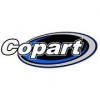Accounts Receivable Executive
40+ Accounts Receivable Executive Interview Questions and Answers
Asked in KaVo Dental (India)

Q. What are my ideas about betterment of operations carried out right now
I believe in streamlining processes and implementing automation to improve efficiency.
Implementing an automated invoicing system to reduce errors and save time
Integrating a payment gateway to allow for faster and more secure payments
Regularly reviewing and updating credit policies to minimize bad debt
Providing training to staff on effective communication and dispute resolution
Utilizing data analytics to identify trends and improve collection strategies

Asked in Air Liquide

Q. What goods and services are covered under Reverse Charge Mechanism (RCM)?
Goods and services covered under RCM include specified categories like transportation services, insurance services, and goods purchased from unregistered dealers.
Transportation services
Insurance services
Goods purchased from unregistered dealers
Accounts Receivable Executive Interview Questions and Answers for Freshers

Asked in Omega Healthcare

Q. Which is your favorite color, red or blue, and why?
My favorite color is blue because it represents calmness and serenity.
I prefer blue because it has a calming effect on me.
Blue is associated with the sky and the ocean, which are both vast and peaceful.
Red is too bold and intense for my taste.
Blue is a versatile color that can be paired with many other colors.
Blue is often used in healthcare settings to promote a sense of calm and trust.

Asked in Air Liquide

Q. Why is debit accrued income in the balance sheet under current assets as an adjusting journal entry?
Accrued income is recorded as a debit in the balance sheet under current assets to reflect revenue earned but not yet received.
Accrued income represents revenue that has been earned but not yet received.
Debiting accrued income in the balance sheet under current assets increases the company's assets and reflects the amount of revenue that is owed.
This adjusting journal entry ensures that the company's financial statements accurately reflect the revenue earned during the accoun...read more

Asked in Air Liquide

Q. Do you know about section 194Q and when it applies?
Section 194Q is a TDS provision on payment made to resident for purchase of goods
Section 194Q mandates deduction of TDS at 0.1% on purchase of goods exceeding Rs. 50 lakhs in a financial year
It applies to buyers whose turnover exceeds Rs. 10 crores in the preceding financial year
The TDS deducted under section 194Q needs to be deposited with the government and a TDS certificate must be issued to the seller
It is applicable from 1st July 2021

Asked in Richi Circuitronix

Q. What is Accounts Receivable (AR)? What is Accounts Payable (AP)? What is the difference between a debit note and a credit note?
AR and AP are accounting terms for money owed to or by a company. Debit and credit notes are used to adjust these accounts.
AR stands for Accounts Receivable, which is money owed to a company by its customers.
AP stands for Accounts Payable, which is money a company owes to its suppliers or vendors.
Debit notes are used to adjust accounts when a customer owes less money than originally invoiced.
Credit notes are used to adjust accounts when a customer owes more money than origina...read more
Accounts Receivable Executive Jobs




Asked in Copart

Q. How do you handle payments in cash apps when the customer has not provided remittance information?
I identify and resolve cash app payments without remittance info through systematic tracking and customer communication.
Review transaction details: Check the payment amount and date to match with outstanding invoices.
Contact the customer: Reach out via email or phone to request remittance information for proper allocation.
Use internal records: Cross-reference with customer account history to identify potential invoices that match the payment.
Document findings: Keep a record o...read more

Asked in Air Liquide

Q. How do you claim Input GST on goods?
Input GST on goods can be claimed by ensuring proper documentation and compliance with GST regulations.
Ensure that the goods are eligible for GST input credit
Maintain proper invoices and receipts for the goods purchased
File GST returns accurately to claim input credit
Follow GST regulations and guidelines for claiming input credit
Share interview questions and help millions of jobseekers 🌟


Asked in Copart

Q. What do you know about the Order to Cash (O2C) process?
The Order to Cash (O2C) process encompasses all steps from order placement to cash receipt.
Order Placement: Customers place orders through various channels, such as online or phone.
Order Fulfillment: The company processes the order, picks, packs, and ships the products.
Invoicing: An invoice is generated and sent to the customer, detailing the products and payment terms.
Payment Collection: The company follows up on payments, which can be made via checks, credit cards, or elect...read more

Asked in Humalife Healthcare

Q. How would you approach promoting our health products to new customers?
I would leverage targeted marketing, customer education, and partnerships to effectively promote health products to new customers.
Identify target demographics: Focus on health-conscious individuals, fitness enthusiasts, or specific age groups.
Utilize social media campaigns: Create engaging content showcasing product benefits, such as testimonials or success stories.
Offer free samples or trials: Allow potential customers to experience the product firsthand, increasing the like...read more

Asked in Humalife Healthcare

Q. What interests you about the healthcare/pharmaceutical industry?
I am drawn to the healthcare industry for its impact on lives and the dynamic challenges in managing financial processes.
The healthcare industry directly affects people's lives, making my work meaningful.
I am fascinated by the complexity of billing and reimbursement processes, such as navigating insurance claims.
The rapid advancements in pharmaceuticals require adaptability in financial practices, which keeps the role engaging.
Working in accounts receivable allows me to contr...read more

Asked in Air Liquide

Q. How do you book accrued income?
Accrued income is recorded as a revenue on the income statement even though the cash has not been received yet.
Accrued income is recognized when it is earned, regardless of when it is received.
To book accrued income, debit the accrued income account and credit the revenue account.
Example: If a company provides services in December but does not receive payment until January, the accrued income for December would be recorded in December's financial statements.

Asked in Savi Infoservices

Q. Give a 2-5 minute description on any topic.
The impact of social media on society
Social media has revolutionized communication and connectivity
It has transformed the way people interact and share information
Social media has both positive and negative effects on society
Examples include the spread of fake news, cyberbullying, and online activism
It has also facilitated business growth and marketing opportunities

Asked in Humalife Healthcare

Q. What do you understand by RCM management?
RCM management involves optimizing revenue cycle processes to enhance cash flow and reduce billing errors in healthcare.
RCM stands for Revenue Cycle Management, crucial for tracking patient care from registration to final payment.
It includes processes like patient scheduling, insurance verification, billing, and collections.
Effective RCM reduces claim denials; for example, verifying insurance before services can prevent billing issues.
Utilizing technology, such as EHR systems...read more

Asked in Sandhar Technologies

Q. What is direct tax & indirect tax
Direct tax is levied directly on individuals and businesses by the government, while indirect tax is imposed on goods and services.
Direct tax is paid directly by the taxpayer to the government, such as income tax, corporate tax, and property tax.
Indirect tax is collected by an intermediary (like a retailer) from the consumer and then passed on to the government, such as sales tax, value-added tax (VAT), and goods and services tax (GST).

Asked in Goldfinch Hotel

Q. Accounting rules and knowledge of different software
Knowledge of accounting rules and software is essential for an Accounts Receivable Executive.
Must have a strong understanding of accounting principles and practices
Proficiency in accounting software such as QuickBooks, Xero, or SAP
Ability to analyze financial data and generate reports
Familiarity with accounts receivable processes and procedures
Experience with collections and customer service
Attention to detail and accuracy in data entry

Asked in APPL Industries

Q. What is aging, and what is customer pattern?
Ageing refers to the process of categorizing accounts receivable based on the length of time they have been outstanding. Customer pattern refers to the payment behavior of customers.
Ageing helps in identifying the accounts that are overdue and need immediate attention.
Ageing is usually done in buckets such as 0-30 days, 31-60 days, 61-90 days, and so on.
Customer pattern helps in understanding the payment behavior of customers and identifying any trends or issues.
Customer patt...read more

Asked in ClinicAnywhere

Q. Do you have a stable internet connection?
Yes, I have a reliable internet connection with high speed and minimal downtime.
I have a high-speed internet connection with a reliable service provider.
I rarely experience downtime or connectivity issues.
I am able to access online resources and systems without any interruptions.
Asked in Novotel Pune Nagar Road

Q. How does Accounts Receivable (AR) work?
Accounts Receivable (AR) manages money owed to a business for goods/services provided on credit.
AR involves tracking invoices issued to customers until payment is received.
For example, a company sells products on credit and sends an invoice to the customer.
The AR team monitors payment terms, ensuring customers pay within the agreed timeframe.
If a customer delays payment, the AR team may follow up with reminders or negotiate payment plans.
Effective AR management improves cash ...read more

Asked in Datamatics Global Services

Q. What are the shortcuts for Excel?
Excel shortcuts enhance productivity by speeding up navigation and data manipulation tasks.
Ctrl + C: Copy selected cells. Example: Highlight a range and press Ctrl + C to copy.
Ctrl + V: Paste copied cells. Example: Use Ctrl + V to paste data into a new location.
Ctrl + Z: Undo the last action. Example: If you accidentally delete data, Ctrl + Z restores it.
Ctrl + S: Save the current workbook. Example: Pressing Ctrl + S frequently helps prevent data loss.
Alt + Enter: Start a new...read more

Asked in Muthoot Fincorp

Q. Please introduce yourself.
Detail-oriented Accounts Receivable Executive with strong communication skills and a passion for financial accuracy.
Over 5 years of experience in accounts receivable management, ensuring timely collections and accurate invoicing.
Proficient in using accounting software like QuickBooks and SAP to streamline processes and improve efficiency.
Successfully reduced outstanding receivables by 20% in my previous role through effective follow-up and negotiation.
Strong analytical skills...read more
Asked in JLL Property

Q. Describe the entire Accounts Receivable process.
Accounts Receivable (AR) process involves invoicing, tracking payments, and resolving discrepancies.
Generate and send invoices to customers
Track payments and follow up on overdue accounts
Reconcile payments with invoices and resolve any discrepancies
Maintain accurate records of all transactions
Communicate with customers to address any billing issues
Generate reports on AR aging and collections
Work closely with sales and customer service teams

Asked in Travel Food Services Ltd

Q. Which type of invoice processing
There are two main types of invoice processing: manual and automated.
Manual invoice processing involves physical handling of invoices, data entry, and verification by employees.
Automated invoice processing uses software to scan, extract data, and process invoices without human intervention.
Examples of automated invoice processing software include SAP Ariba, Coupa, and Concur.

Asked in Infosys

Q. Tell me about Infosys Technologies.
Infosys Technologies is a global leader in consulting, technology, and next-generation services.
Founded in 1981, Infosys is headquartered in Bangalore, India.
Offers services in IT consulting, application development, and maintenance.
Utilizes advanced technologies like AI, machine learning, and cloud computing.
Has a strong focus on digital transformation for businesses.
Serves clients across various industries, including finance, healthcare, and retail.

Asked in FIL Industries

Q. Can you define what TDS is?
TDS stands for Tax Deducted at Source, which is a tax deducted by the payer at the time of making payment.
TDS is a form of income tax that is deducted from the income of an individual or entity before the actual income is received.
It is deducted by the payer and deposited with the government on behalf of the payee.
TDS rates vary depending on the type of payment being made, such as salary, interest, rent, etc.
TDS ensures that the government receives tax revenue in advance, rat...read more
Asked in Blue Lotus Systems

Q. What do you know about invoicing?
Invoicing is the process of creating and sending bills to customers for goods or services provided, ensuring timely payments.
Invoicing includes essential details like invoice number, date, due date, and payment terms.
It serves as a legal document that outlines the transaction between buyer and seller.
Invoices can be generated manually or through accounting software, streamlining the process.
Example: A company sends an invoice for $1,000 for services rendered, specifying payme...read more
Asked in 1t9 Technology

Q. Accounts receivable and GST with TDS
Accounts receivable and GST with TDS are interrelated in financial transactions.
Accounts receivable refers to the money owed to a company by its customers for goods or services provided.
GST or Goods and Services Tax is a tax levied on the supply of goods and services.
TDS or Tax Deducted at Source is a tax that is deducted at the time of payment.
Accounts receivable and GST are both subject to TDS.
The TDS rate for accounts receivable and GST may vary depending on the nature of ...read more

Asked in Capgemini

Q. What is accounts receivable?
Accounts receivable is the money owed to a company by its customers for goods or services provided on credit.
Accounts receivable represents the amount of money owed to a company by its customers.
It is a key component of a company's working capital.
Accounts receivable is typically recorded as a current asset on the balance sheet.
Companies often have specific policies and procedures in place for managing accounts receivable, including sending invoices, following up on overdue p...read more

Asked in Genpact

Q. What is cash application?
Cash application is the process of recording and applying incoming payments to the correct customer accounts in the accounting system.
Cash application involves matching received payments to invoices or accounts receivable records.
It ensures that payments are accurately recorded and applied to the correct customer accounts.
Automated cash application software can streamline the process and reduce manual errors.
Reconciling bank statements with cash application records is an impo...read more

Asked in Bamko

Q. What does an accounts receivable executive do?
Accounts receivable is the money owed to a company by its customers for goods or services provided on credit.
Accounts receivable represents the amount of money that customers owe to a company for goods or services purchased on credit.
It is an important aspect of a company's financial health as it impacts cash flow and overall profitability.
Monitoring and managing accounts receivable involves tracking payments, following up on overdue invoices, and reconciling discrepancies.
Ex...read more
Interview Questions of Similar Designations
Interview Experiences of Popular Companies








Reviews
Interviews
Salaries
Users

















